Study: Global comparisons of news consumption and shifting channels
The Reuters Institute for the Study of Journalism at the University of Oxford has just published the very interesting 110 page Digital News Report 2013, which draws on an extensive survey of news consumption across nine major countries.
Below are a selection of some of the most interesting data points in the report, focusing on how people are paying for news, along with brief commentary. Source for all data is Digital News Report 2013
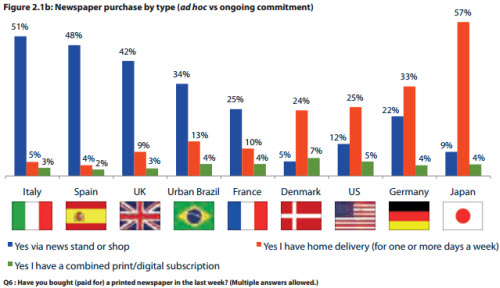
There is very strong variation in the degree to which newspapers are bought by subscription or at the newsstand. This is one of the factors we looked at in our Newspaper Extinction Timeline, as it shapes how quickly people are likely to change their news consumption habits.
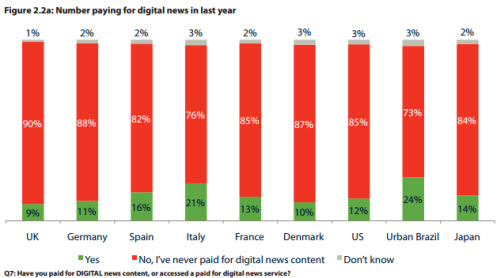
The highest levels of payment for online news is in Urban Brazil, followed by Italy, with UK in last place of the countries surveyed with just 9%. We put Metro Brazil ahead of Western European countries such as France and Germany in our extinction timeline for a number of reasons, including at the time early signs of the willingness to pay for news. It is intriguing to see UK as a laggard, perhaps because rather than despite of high levels of consumer Internet usage.
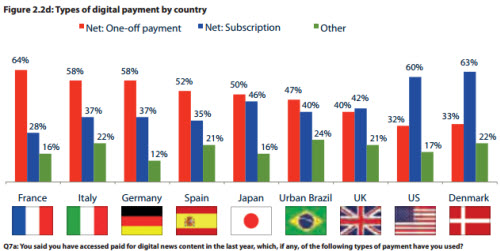
Publishers love subscription models, with US publishers, together with the Danish, doing very well at this model, while in Western Europe content is usually purchased as a one-off.
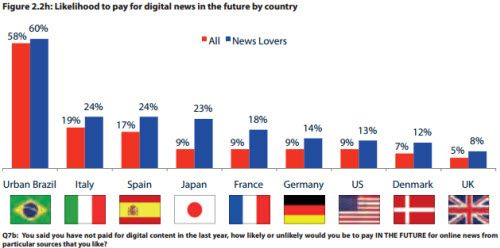
There is an extraordinary disparity in plans to pay for news online, with Urban Brazil’s high levels possibly supported by high media concentration leading to fewer choices. The attitudes in Southern Europe and Japan are promising for news organizations, while UK is again a laggard.

Computers remain the dominant platform for news consumption, undoubtedly largely supported by access to news from the workplace, however tablets and smartphones are fast rising, most of all in Denmark, with Spain, UK, and the US in the next tier.
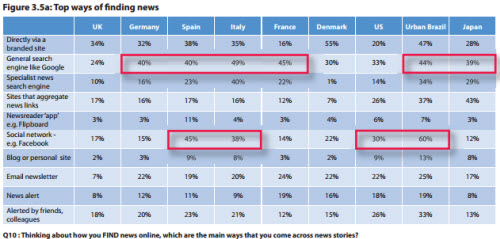
One of the most important aspects of the changing news landscape is how news is found. While in Brazil and Denmark around half of news consumers go directly to a branded site, few do so in the France and the US. General search engines and social media are the rising sources of news, with aggregators also strong in Japan, Brazil and the US. We can expect to continue to see major shifts in the source of news in coming years.
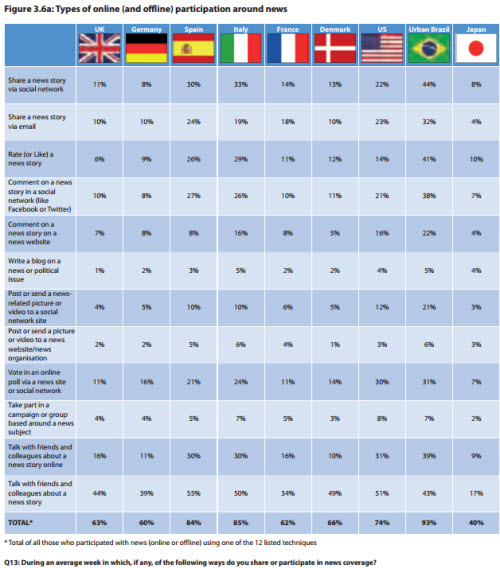
To finish off, we can see strong differences in participation in news and news distribution, with 93% of urban Brazilians saying they engage in some way with news, compared to 40% of Japanese. The differences in the specific kinds of interaction reflect not only the cultures in each country, but also how ‘digital culture’ is emerging and being shaped by both publishers and consumers.
